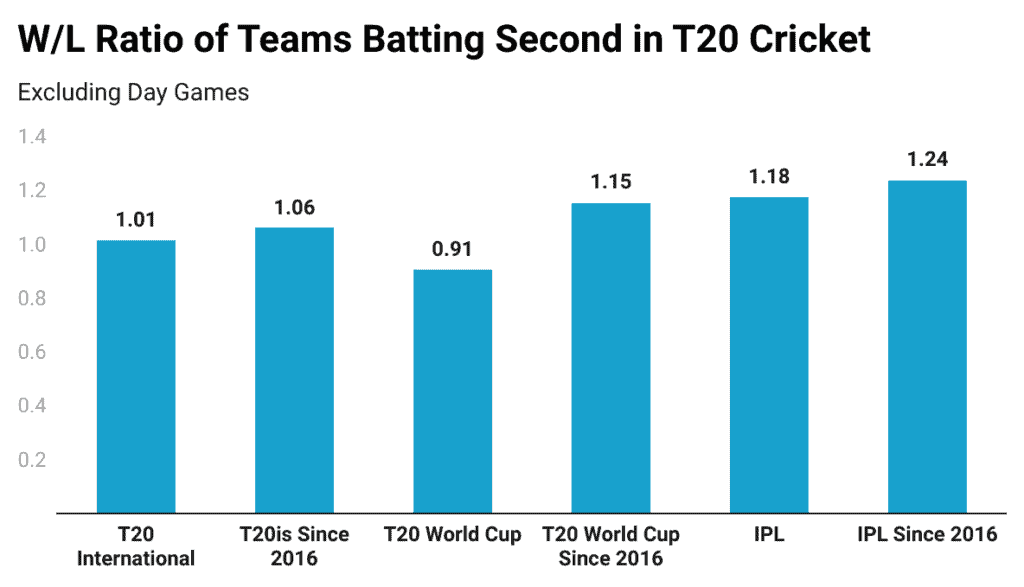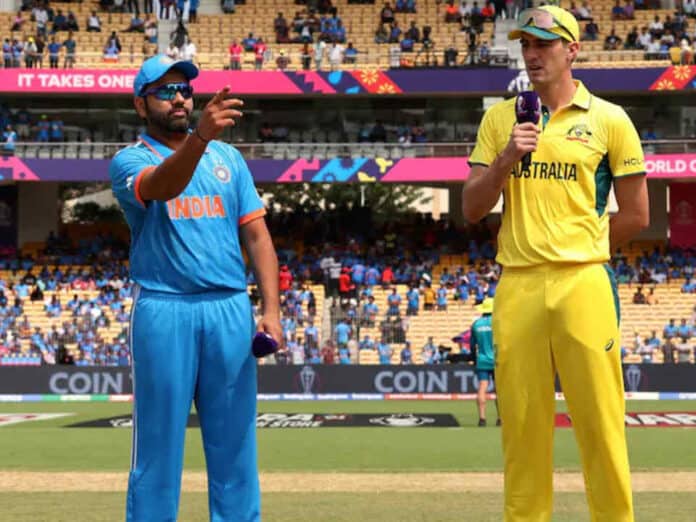Cricket has been modernised, revolutionised, revised & even reorganised. Today we’ve analysts and experts with specific jobs who goes into the depth of the sport to extract every single piece of data that can possibly give their teams an edge over the opponent.
But what would be the use of all technologies and strategists if the result of the game were to be decided by the flip of a coin?
Toss has been an integral part of the sport ever since its inception. “Beyond its surface appearance of merely determining batting order, the toss in cricket holds significant tactical weight, influencing the course of the game in strategic ways in all formats”.
The Dew Factor
In the late 1970s, the Australian business tycoon Kerry Packer revolutionised cricket with the inauguration of the commercial competition WORLD SERIES CRICKET (WSC). Coloured Clothing, White ball, Player autonomy with better pay & the most pivotal feature of all, Floodlit matches. The competition proved to be a landmark event for the future of limited-overs cricket. By the 1992 Cricket World Cup, coloured jerseys and floodlit ODI games were completely adapted into international cricket.
But Day-Night cricket matches had a problem, which caused games to be somewhat biased. In regions close to coastal areas, especially during winter when the sky is clear and nights are longer, the playing surface gets wet, making the ball slippery for the bowlers to grip, giving a straight advantage to the team batting when the dew is higher. Chasing becomes easier & the team winning the toss gets ahead in the game before the ball is even bowled.
But to what extent has the dew & toss factor affected the game?? What are the numbers? Could it just be a myth or is something other than the dew making it easier to chase?
Number’s Game
The T20 World Cup and IPL are considered as the two pinnacle events for the format. Although the overall numbers in both tournaments do not favour batting the 2nd side too much but the differences in recent tournament’s big games tells a different story.
The final of the T20 World Cup 2012 was the last time a team won an official knockout match in T20 World Cup while batting first (excluding rain-affected games) Since then in the last 12 years the last 11 knockout games have all been won by teams batting 2nd.
The dew impact in some of these games was visible, like the 2016 Semifinal between West Indies & India or the 2021 final between Australia & New Zealand.
But to generalise an opinion for the whole format on the basis of just knockout games seems impulsive.
A graphical illustration of the W/L ratio in T20 format under different sets of conditions.
[Statistics includes only the top 12 nations for T20 international numbers]

Fact v/s Illusion
The dew may ease the runchase at times, but batting under floodlights sometimes does the opposite. Some teams have won big games with a “runs on the board” mindset while some prefer having a target to chase. It usually comes down to the captain’s preference or the team’s style of play. With more and more high-scoring games and the aggressive attitude of batters, batting 2nd sometimes becomes a safer choice, maybe not only because the dew falls later but because the team trusts in its ever-evolving batting units.
The modern-day batsmen adapt run chases like they were done never before. Today’s batsmen have evolved their game to unprecedented heights. They sculpt their physique, analyse footage meticulously, adapt with switch hits, and unleash aggression from the first ball. Their fearless approach redefines the art of batting, showcasing unparalleled dedication and innovation on the field.
In cricket, the art of chasing has surpassed conventional limitations, not just because of dew but very much due to the sheer calibre of modern-day batsmen. Their mastery of the game coupled with determination and nothing to lose mentality is redefining the narratives of cricket.
“Teams batting 2nd win often” can be seen as a frequency illusion. Despite limited evidence, tournaments like the 2016 IPL, 2021 T20 World Cup or 2021 IPL (win rate of batting 2nd 69%, 64%, 65% respectively) have instilled in fans the belief that batting second is inherently easier in T20 matches, perpetuating a cognitive bias akin to the frequency illusion.
At the end of the day, cricket is a sport that requires the highest quality of skill sets from individuals, but at the same time involves more scientific aspects than any other sport. Toss may or may not be a conclusively bias factor in the shortest format but it is still almost an even game between bat and ball as every scoreline starts from 0-0(0).

